by Deya Ramsden, Virginia Department of Forestry’s Middle James River Forest Watershed Project Coordinator
Through the Va. Department of Forestry we planted a variety of buffers this Spring ranging from a small residential plot less than an acre in size to ten acres of pines in rural Appomattox county. We used several methods to establish these buffers. For the small urban or residential plantings we have tapped our own Foresters to come together and install the trees.
Admittedly these small plots have been the most fun, as they give us a chance to interact with the community and colleagues. The James River Buffer Program used matching funds from the Virginia Trees for Clean Water program, which helps funds water quality improvement projects that enhance the community, to complete our urban or residential projects.
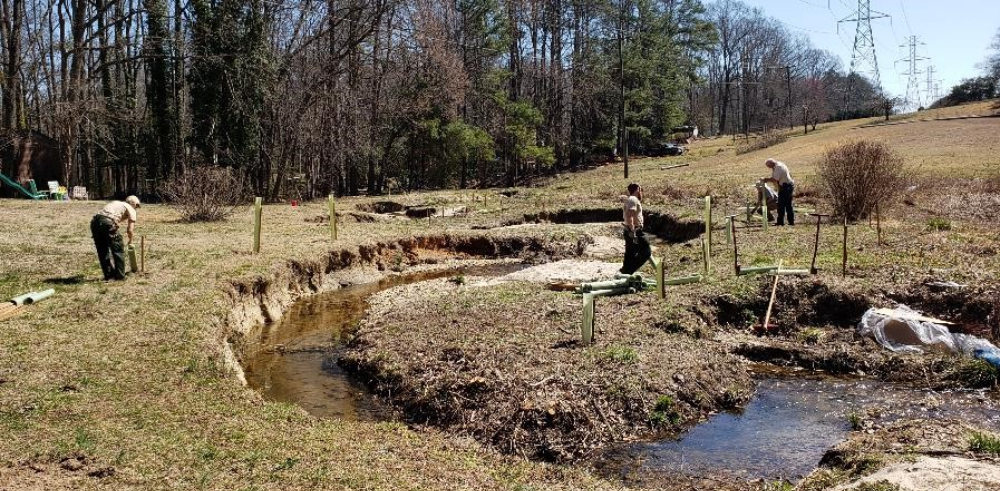
The Five Forks Work Area team installing a buffer of pollinator and bird friendly shrubs around a stream in North Chesterfield.
Planting Bare Root Tree Seedlings
Through the James River Buffer Program we establish planted forested buffers using one year old, dormant, bare root seedlings. The standard size for hardwood seedlings is ¼ inch in diameter or 18 inches tall, pretty small! The benefit of using such a small seedling is that, with proper care and planting, it can easily adapt to its new home. Since bare root seedlings are not watered after planting it is important that they go in the ground when the weather is cool and mild, to avoid drying out. Seedlings are handled carefully prior to planting, kept cool and moist, as they are perishable. The planting seasons are fairly short in Virginia– spring plantings generally occur between February 1st and April 15th and fall plantings between late-September and mid- to late November.
Find out more about planting bare root seedlings through the Va. Department of Forestry website: https://www.dof.virginia.gov/tree/care/how-to-plant-seedling.htm
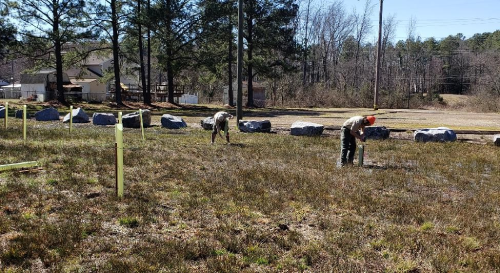
The Capital Work Area team installing a hardwood and pine buffer in Henrico at the West End Manor Civic Associations campus.
On slightly larger sites, we’ve also worked with contractors to hand plant seedlings and install protective tree shelters. The hand planting crews are impressive, working quickly and efficiently to get the job done.
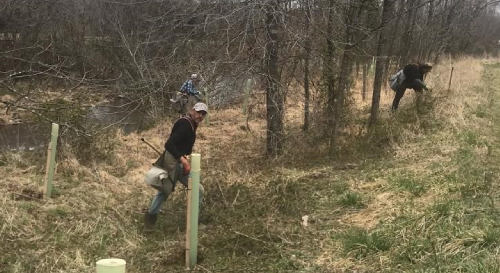
A planting crew enhancing a buffer along the Rockfish Trail. It was perfect planting weather cool and mistly with a chance of rain
For larger plots, on open land, we have been working with a contractor to plant both pines and hardwoods by tractor. A special attachment creates a scalped row into which the seedling is placed and then soil is pushed back over the roots. The tree planter sits on the back placing the seedlings at the correct interval so seedlings are properly spaced. It’s quite a sight to witness five acres of over 1000 seedlings planted in less than 2 hours!
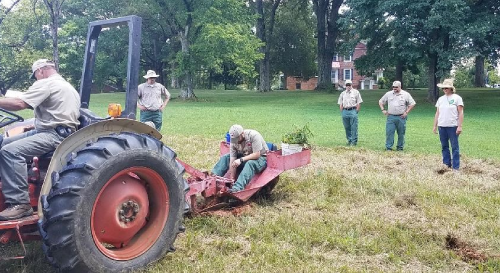
Taken on a JRA and VDOF Riparian Training event in 2019. This photo shows the tree planting attachment on a tractor.
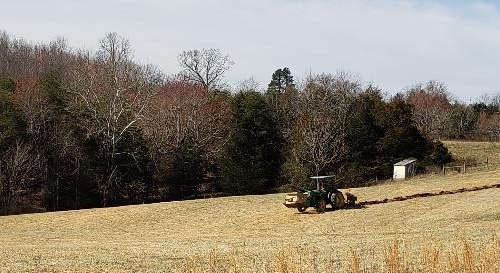
A contractor machine planting in Buckingham County. Over 1000 hardwood seedlings were installed to convert this field adjacent to a stream to a forested wildlife food plot.
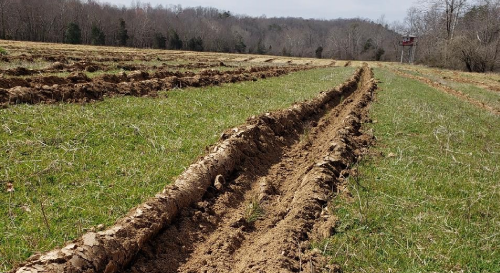
A scalped row of loblolly pine in a buffer near the Slate River in 2020.
